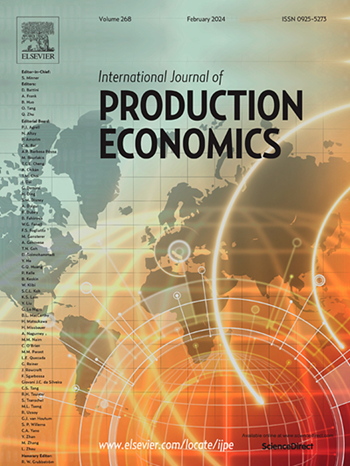Credit where it's due: The synergy of trade credit and innovation in R&D-driven firms
IF 9.8
1区 工程技术
Q1 ENGINEERING, INDUSTRIAL
引用次数: 0
Abstract
In business transactions, information asymmetry poses significant challenges, particularly for innovative firms. This study investigates the strategic role of trade credit in overcoming these obstacles and fostering growth in R&D-investing companies. We hypothesize that firms offering more trade credit (H1) and investing in R&D (H2) can enhance their growth prospects. Furthermore, we propose that combining R&D investments and trade credit (H3) leads to greater growth than either activity alone, as trade credit facilitates the commercialization of R&D outputs while mitigating information asymmetry. We analyze trade credit's amount and duration using the Difference Generalized Method of Moments (GMM) to address potential endogeneity and firm-level heterogeneity. This is complemented with Fixed Effects Ordinary Least Squares (FE-OLS) estimations for robustness. Our findings are further supported through two-stage least squares (2SLS) and additional GMM analyses with an external instrument. The results reveal that while both R&D investments and trade credit supply individually contribute to growth, firms combining R&D with trade credit experience significantly higher growth rates. This highlights trade credit's critical role in facilitating the commercialization of R&D outputs. The findings also underscore the critical importance of communication and cooperation between business partners in fostering growth.
应得的信贷:贸易信贷与研发驱动型企业创新的协同效应
在商业交易中,信息不对称带来了重大挑战,尤其是对创新型企业而言。本研究探讨了贸易信贷在克服这些障碍和促进研发投资公司成长方面的战略作用。我们假设企业提供更多的贸易信贷(H1)和研发投资(H2)可以提高其增长前景。此外,我们提出将研发投资和贸易信贷(H3)结合起来比单独的任何一种活动都能带来更大的增长,因为贸易信贷促进了研发产出的商业化,同时缓解了信息不对称。本文采用差分广义矩法(GMM)分析了贸易信贷的金额和持续时间,以解决潜在的内生性和企业层面的异质性。这是补充固定效应普通最小二乘(FE-OLS)估计稳健性。通过两阶段最小二乘法(2SLS)和额外的外部仪器GMM分析,我们的发现得到了进一步的支持。结果表明,虽然研发投资和贸易信贷供应都对增长有贡献,但将研发与贸易信贷结合起来的企业的增长率明显更高。这突出了贸易信贷在促进研发产出商业化方面的关键作用。调查结果还强调了商业伙伴之间的沟通与合作对促进增长的关键重要性。
本文章由计算机程序翻译,如有差异,请以英文原文为准。
求助全文
约1分钟内获得全文
求助全文
来源期刊
CiteScore
21.40
自引率
7.50%
发文量
266
审稿时长
52 days
期刊介绍:
The International Journal of Production Economics focuses on the interface between engineering and management. It covers all aspects of manufacturing and process industries, as well as production in general. The journal is interdisciplinary, considering activities throughout the product life cycle and material flow cycle. It aims to disseminate knowledge for improving industrial practice and strengthening the theoretical base for decision making. The journal serves as a forum for exchanging ideas and presenting new developments in theory and application, combining academic standards with practical value for industrial applications.

 求助内容:
求助内容: 应助结果提醒方式:
应助结果提醒方式:


